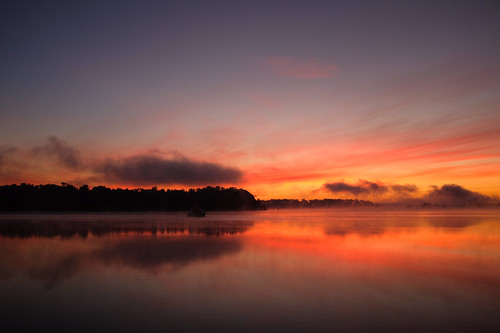 |
| The sun sets behind Mitchell Butte in Monument Valley, Arizona, December 2012. Nikon D3S, 1/15 @ f 4. |
Maybe that's a bit of an overstatement, because I do, and have shot them, I mean who doesn't. I talk about light all the time and like most photographers am a big fan of early morning and late afternoon light. In fact, didn't I just write about light in my previous blog post?
And in order to get that great light you normally have to be at a location before the sun comes up and stay after the sun goes down. So naturally you see a lot of sunrises and sunsets.
So why do I dislike photographing them?
 |
| Sunset at the site of the Battle of the Wheatfield, Gettysburg, Pennsylvania, November 2002. Nikon D1H, 1/16 @ f16. |
By this point you may be wondering if I'm joking. I'm just wondering how I'm going to finish this blog. Maybe the best way is to get over it, embrace the beauty of it all. Or better yet, maybe I could offer five tips on photographing the rising and setting sun.
 |
| Sunrise on the Sassafras River off of the Chesapeake Bay, September 2013. Fuji X100S, 1/450 @ f2, exp. comp. -1.0 |
1. Turn around. You know that golden light falling on the pond or barn or whatever, well it is coming from somewhere and that somewhere is normally behind you. I've been shocked a few times when I think the light is gone only to turn around and see something amazing.
2. Underexpose. Setting your camera to underexpose the scene by a stop or so will deepen the colors and minimize overexposure of any bright spots. I would also recommend shooting RAW so you have some extra exposure latitude when post processing.
3. Mind your foreground. Putting something interesting in the foreground adds interest and can separate your sunset or sunrise photograph from all the others. Come to think of it, I do like some of my photos when I've incorporated a strong foreground.
4. Wide is fine but think tight. While a wide angle lens can emphasize the grandness, choosing a long lens compresses the scene and if you paid attention to tip number three, then the foreground subject becomes that much more interesting.
5. Bracket, bracket and bracket. You can follow tip number two, but really if there was ever a time to bracket, now is that time. But be mindful of your time, because before you realize it the sun will have risen or set.
 |
| Early morning duty in Guantanamo Bay, Cuba, May 2003. Nikon D1H, 1/4000 @ f6.3, exp. comp. - 0.3. |
No comments:
Post a Comment